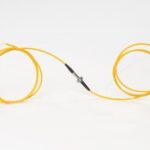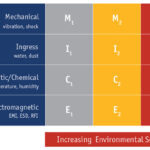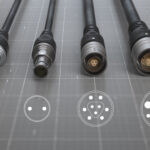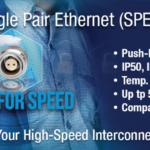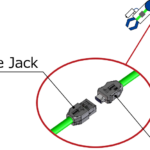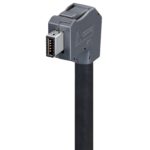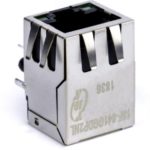Orbex Group announces its 700 Series of fiber optic rotary joint (FORJ) assemblies, supporting either single- or multi-mode operation with options for wavelengths of 1310 or 1550 nanometers. Both the 1310- and 1550-nanometer options feature an outer diameter of 7 millimeters for installation in tight spaces. Additionally, each FORJ assembly features an insertion loss of […]
Ethernet
What are the four MICE elements and three performance levels for connectors?
IEC 11801-3:2017 provides guidance for designing physical infrastructure to support network communications in a manufacturing environment. That guidance is in the form of four MICE elements and three performance levels. The four elements of the MICE acronym include Mechanical, Ingress, Chemical/climatic, and Electromagnetic compatibility. The MICE standards define three performance levels and apply to cabling […]
Integrated connector modules now include 60 W and 100 W PoE versions
Bel Fuse Inc announced the expansion of its single port, 10G, NBase-T, 60W, and 100W power over Ethernet (PoE), MagJack integrated connector modules (ICMs). Suitable for a wide range of uses, such as industrial controllers, video cameras, Wi-Fi access points, or any applications requiring a single port Ethernet connector. The new ICM products are aimed […]
Fischer Connectors enhances IIoT connectivity with ultra-rugged solutions using single pair Ethernet and USB 3.2 protocols
Fischer Connectors has developed new high-speed data and power connectivity solutions combining Single Pair Ethernet and USB 3.2 Gen 2 high-speed protocols with the rugged, high-density, and miniature features of its flagship product lines. They enable space-saving and cost-efficient integration in industrial automation and robotics, chemical plants, food processing, automotive production lines, outdoor sensing, and […]
Single-pair Ethernet cables features push-pull latching connectors
As network requirements have changed over time, Ethernet has consistently improved in terms of speed, security, and quality. As a result, it has emerged as the standard for wired connectivity in most industries, including telecom, transportation, and defense. The growth of Ethernet in both industrial automation and the automobile industry is currently being accelerated by […]
Industrial Ethernet connector line gets an inline jack
An inline jack for Hirose Electric’s IX series lets you construct panel-mount or extension cables.
What is the common impedance of a twisted pair?
Understanding impedance in twisted-pair cables help you avoid signal problems.
IX Industrial connector available in right-angle plug
Hirose has expanded its popular ix Industrial Series with the launch of a right-angle plug version. The right-angle plug was developed in response to customer demands for solutions that combine a rugged and durable design with space savings. The ix Industrial is commonly used in factory and process automation, machine to machine communication, robotics, sensors, […]
RJ45 magnetic modules meet ethernet requirements
Daburn Electronics and its Polytron Devices division have announced a family of RJ45 magnetic integrated connector modules that can accommodate a variety of Ethernet-enabled devices. These RJ45 jack and connector modules integrate magnetics to protect against electromagnetic interference (EMI) and common mode signals, satisfying various data transmission requirements such as Power over Ethernet (PoE) networks, […]
Single-Pair Ethernet addresses industrial priorities, Part 2: hardware realization
For applications driven by sensors more than high-speed data, the IEEE 802.3cg standard offers single-pair Ethernet connectivity with far lower cable costs and bulk. Part 1 looked at the context and standard that defines Single-Pair Ethernet and some of its variations, and how it fits into the IIoT application area. This part will look at […]

